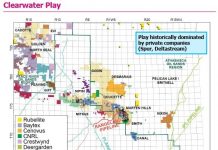BUY THE BANKS
A few weeks ago, I spoke to the Credit Suisse X-Links Monthly Pay 2xLeveraged Mortgage REIT (REML – NASDAQ) as a way of playing The-Back-To-Work Trade (as opposed to the Stay-At-Home trade that dominated during the first part of the COVID pandemic).
REML is a play on commercial REITs. It tracks the iShares Mortgage Real Estate ETF (REM -NASDAQ), but with 2x leverage.
As we anticipated, REML has exploded higher. Today it sits at $5.40. Before the Pfizer vaccine news the ETF was $3.80.
Today, I look at a second Back-To-Work-Trade: U.S regional banks.
Why regional banks? To put it simply – banks are well positioned to benefit from a vaccine.
By all accounts we are in for a very tough winter – we are already seeing lockdowns and scaled back access to restaurants, travel and malls.
Those businesses have a tough few month ahead.
They also represent the primary borrowers of many regional banks.
But now there is a light at the end of the tunnel. A vaccine means the pain will end.
One thing matters to the banks – collateral. The businesses will continue to suffer for the next few months. But the bank does not own the business, just the loan.
To take one example, regional banks are big lenders to the hospitality industry – hotels.
These loans were generally made at 50-60% loan-to-value. That is a big cushion. The replacement value of a hotel room is at least double the loan amount.
Now maybe replacement value was a wish and a prayer a few months ago, when COVID was as far as we could see. But now we can say that in 6-9 months, those hotel rooms will be booked again. Those loans don’t look so bad.
US Regional Banks Stocks Have Already Broken Out
Like REML, the regional bank stocks have had a nice run. But even now, many remain well below pre-COVID levels. If you believe we are months away from normalcy, it sets up an interesting trade.
Consider the ETF, the First Trust Community Bank Index (QABA – NASDAQ). An ETF is the simplest play. QABA currently trades at $44 but began the year at $50.
Not too bad. But drilling into individual names you can ferret out even better bargains.
Consider OceanFirst Financial (OCFC – NASDAQ). OceanFirst is a New Jersey based regional bank. They also have locations in New York City and one in Philadelphia.
OceanFirst is not a small bank, with a market capitalization of $1 billion. The stock has had a nice run off its summer lows at $13 to a current price of $17. But take that in context – pre-COVID, OceanFirst was a $23-$25 stock.
With news of a vaccine, it is worth asking the question – why would a bank like OceanFirst not get back to its pre-COVID level?
OceanFirst has non-performing loans that remain extremely low – only 0.37% of their total loans by dollar volume. They have already more than provisioned against losses from these loans. The bank even sold off $81 million of problem loans in the third quarter. What remains on the balance sheet is mostly high-quality lending.
Prior to COVID OceanFirst was always a solid performer. The banks return on assets was north of 1.2%, while return on equity was close to 14%.
A Bank with a Free SPAC
Another name that remains well off its pre-COVID level is Customers Bancorp (CUBI – NASDAQ). Customers has, admittedly, already had a run off the lows, but the stock is still over $4 off the $22-$23 level it held in January.
Customers Bancorp is centered in Pennsylvania but operates in states all along the east coast.

Source: Customers Bancorp Investor Presentation
The albatross around Customer’s neck has been their hospitality loan portfolio. The segment accounts for 3.5% of total loans.
At the COVID peak, loan deferrals from hospitality loans (ie. hotels) were 73% of the total loans held. But this is dropping:

In Q3, deferrals from hospitality were down to $126 million, or 31% of the loan portfolio. Total COVID related loan deferrals were only 3% of loans. The majority of these are principal only, meaning the borrower is still paying interest.
Digging into the hotel loans, the average loan-to-value of 65%, meaning that the bank is likely to recover most of the loan even if it defaulted. But with the vaccine on the horizon, it is unlikely to come to that.
Customer’s stock comes with an added bonus – a free SPAC share. Customers announced in the summer that they would be spinning off their BankMobile division to the Megalith Financial SPAC.
BankMobile is a digital banking platform that provides deposit services to college students who receive student loans and government grants.
BankMobile acts as a customer acquisition channel. Customers wanted to spin out BankMobile because:
- BankMobile was expanding their customer acquisition to other banks that did not want to be dealing with a competitor
- BankMobile was butting up against regulatory limitations on the fees it could charge as long as they were part of Customers
The original plan was for Customers to keep a 47% minority stake in BankMobile. But recently Customers announced that those shares would be passed on to shareholders. Each Customer share will give ~0.16 shares of BankMobile.
Very little of the value of BankMobile is currently in the Customer’s share price. Customers trades at 0.7x Price to Tangible Book and only 6x this year’s earnings. In many ways these shares are like a free punt on the BankMobile business.
The Tiniest of Banks
If you do not mind wading into smaller and more illiquid names, the opportunities are even more evident. Many of the microcap community banks have only started to move off their lows.
Two names that fit the bill are Codorus Valley Bancorp (CVLY – NASDAQ) and Malvern Financial (MLVF – NASDAQ).
Codorus was a $22 stock in February, 30% higher than today. Malvern is a 40% discount to its pre-COVID level.
Neither of these banks is particularly memorable, but that is not really the point. The idea here is to buy “boring” at levels less than they were a year ago.
Codorus Valley serves parts of Pennsylvania and Maryland. The bank was hit just before COVID by a fraudulent borrower, resulting in a $7.5 million loan loss in Q1. Since then the company has taken more normal loan loss provisions of $2.5 million in Q2 and $2 million in Q3.
Even with the larger than normal loan losses, earnings were $1.43 per share for the first 9 months of the year. The stock trades at 9x their pre-COVID 2019 earnings, and at 86% of tangible book value.
Malvern is also located in the Northeast. It is headquartered in Philadelphia and operates in Pennsylvania, Delaware, New Jersey and Florida.
By any account Malvern’s loan book was not well positioned for COVID. 5.6% of loans outstanding were hotels. Another 4.2% were fitness centers.
But thanks to a combination of loan deferrals and government support of its borrowers, the bank has muddled through. Malvern had 20 loans totaling $93 million in forbearance at the beginning of November. This is down from $313 million at the end of Q2 and $147 million at the end of September.
Malvern has always been a bit of an underperformer. Nevertheless at $17 the stock trades at 80% of tangible book value and 13x their pre-COVID earnings.
I could go on. There are so many regional banks in the United States. As a Canadian it is almost unfathomable – literally thousands of banks, some of them operating in only a single city or county.
Many of these are public and those that are – especially the small one’s – remain at steep discounts to their price at the beginning of the year.
If you believe the vaccine is coming and that it will bring back normal – as I do – there is simply no reason for this to be so. The trade is simple. Buy these banks at a discount to where they were 12 months ago and wait for the world to return to normal. Terrible boring, but profitable, nonetheless.
I know we are still months away and that seems like a lifetime, but in company-speak – it is only a couple quarters.









